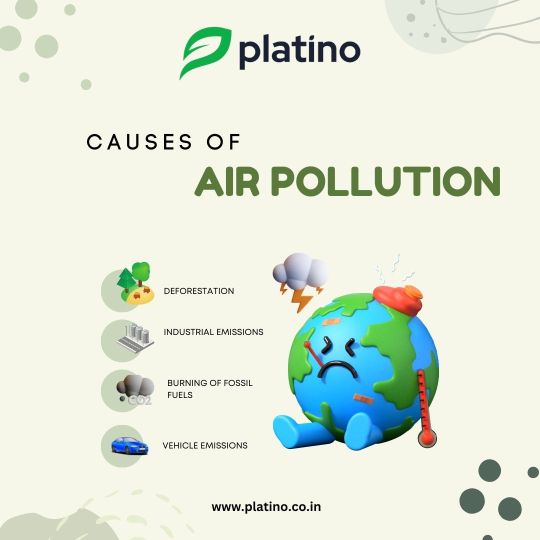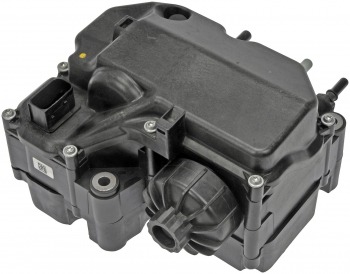#Emission Control
Explore tagged Tumblr posts
Text
#Gas flaring#Flaring emissions#Global emissions#Carbon emissions#Methane release#Fossil fuel pollution#Emission control#Oil gas flaring#Industrial flaring#Climate pollution
1 note
·
View note
Text
https://ukfrpscrubber.com/why-pp-frp-scrubbers-are-revolutionizing-waste-gas-treatment-systems/

UK Enviro Systems leads the way with advanced PP FRP Scrubbers designed to combat industrial air pollution. These scrubbers provide excellent chemical resistance, long service life, and minimal maintenance. Ideal for harsh operating conditions, they help industries meet emission standards with ease while staying cost-effective and eco-conscious.
#PP FRP Scrubber Manufacturers#PP FRP Scrubber Manufacturers in Ghaziabad#PP FRP Scrubbers#Air Pollution Control#Industrial Scrubbers#UK Enviro Systems#Waste Gas Treatment#Emission Control#FRP Scrubbers#Eco Friendly Industry#Sustainable Solutions#Pollution Control System
0 notes
Text
Global Diesel Particulate Filter Market: Growth, Trends, and Future Projections
As the world becomes more conscious of its environmental footprint, industries across the globe are increasingly adopting cleaner and more sustainable technologies. One critical development in the automotive industry is the adoption of Diesel Particulate Filters (DPFs), which help mitigate the harmful emissions produced by diesel-powered engines. In this post, we explore the growth, market trends, and driving factors of the Global Diesel Particulate Filter Market—a sector that's gaining significant traction in the quest for cleaner air and compliance with stricter emissions regulations.
What is a Diesel Particulate Filter?
Before diving into the market analysis, it's essential to understand what a Diesel Particulate Filter is and its significance. A Diesel Particulate Filter is an exhaust component that traps and eliminates particulate matter—such as soot—from diesel engine exhaust gases. The soot particles, which are harmful to both human health and the environment, are captured and periodically burned off through a process known as regeneration. This ensures that diesel-powered vehicles remain compliant with stringent environmental standards, thereby reducing pollution and improving air quality.
To learn more about the intricacies of the diesel particulate filter technology, check out this in-depth analysis of the Intermediate Bulk Container Liner Market.
Market Overview and Key Growth Drivers
The Global Diesel Particulate Filter Market has witnessed robust growth in recent years, and the trend is expected to continue through 2032. As of 2023, the market is valued at approximately USD 15 billion, and it is projected to reach USD 31.9 billion by 2032, growing at a compound annual growth rate (CAGR) of 8.7% during the forecast period.
Several factors are contributing to the growth of the market:
1. Stricter Emission Regulations
Governments around the world are adopting increasingly stringent emission regulations to reduce air pollution. The European Union’s Euro 6 standard, as well as the EPA regulations in the United States, have set high benchmarks for emissions, particularly for diesel-powered vehicles. These regulations mandate the installation of emission-control technologies like Diesel Particulate Filters (DPFs) to help automakers meet these new requirements. As environmental concerns become more prominent, the global demand for DPFs is expected to rise.
2. Expanding Vehicle Production and Sales
Rising vehicle production, especially in emerging economies, plays a significant role in the growing demand for Diesel Particulate Filters. Countries like China, India, Japan, and the United States are experiencing a boom in vehicle sales, which translates to an increase in the adoption of emission control technologies like DPFs. The rapid urbanization and industrialization in these regions are also driving the demand for commercial vehicles that rely heavily on diesel engines, further boosting the market for DPFs.
3. Technological Advancements in DPF Systems
Another key factor contributing to the market’s growth is the ongoing technological advancements in Diesel Particulate Filter systems. Manufacturers are focusing on developing next-generation DPFs that are not only more efficient at trapping and removing particulate matter but also easier to maintain. These innovations have improved the lifespan and performance of DPFs, resulting in greater adoption across the automotive industry.
For a deeper dive into related industries and market forecasts, explore more details in the report available at Request a Free PDF Sample Copy Now.
Regional Market Analysis
The Global Diesel Particulate Filter Market is experiencing significant growth across various regions. While demand is high in many areas, some regions are leading the way.
Asia-Pacific: Leading the Charge
Asia-Pacific is the largest market for Diesel Particulate Filters, accounting for 34.6% of the market share in 2023. The demand for DPFs is driven by the rapid rise in vehicle sales across countries like China, India, and Japan, which are some of the largest automotive markets in the world. In addition to higher vehicle sales, the implementation of stringent emissions regulations in these countries is pushing the adoption of DPFs. Governments in Asia-Pacific are also becoming more proactive in addressing air quality issues, contributing to the growing need for cleaner diesel technology.
North America and Europe: Regulatory-Driven Demand
Both North America and Europe play a critical role in the demand for Diesel Particulate Filters. The Euro 6 regulations in Europe, as well as the EPA standards in the United States, are pushing automakers to adopt cleaner diesel technologies. Both regions have established themselves as innovators in emission-control systems, with European automakers at the forefront of developing advanced DPF solutions. As these regions continue to prioritize environmental sustainability, the DPF market will likely continue to grow.
Challenges Facing the Diesel Particulate Filter Market
While the future of the Diesel Particulate Filter market looks promising, there are some challenges that need to be addressed:
High Initial Costs
The cost of Diesel Particulate Filters remains a significant concern, particularly for vehicle manufacturers. DPFs are sophisticated components, and their installation adds to the overall cost of a vehicle. Additionally, the periodic maintenance and replacement costs for DPFs can deter some consumers and automakers from investing in this technology, especially in price-sensitive markets.
Growth of Electric Vehicles (EVs)
As the world shifts towards electric vehicles, the demand for diesel-powered vehicles may decrease, which could impact the demand for Diesel Particulate Filters. EVs do not require DPFs since they do not produce the same level of emissions as diesel engines. While EV adoption is still in its early stages, it could potentially disrupt the DPF market in the long term.
Market Outlook and Future Projections
Looking ahead, the Global Diesel Particulate Filter Market is poised for sustained growth. Despite the rise of electric vehicles, Diesel Particulate Filters will continue to play a crucial role in reducing diesel engine emissions, especially in regions where diesel vehicles remain the dominant form of transportation. Ongoing innovations in DPF technology will also help improve efficiency and reduce maintenance costs, further driving adoption.
For businesses interested in the latest trends and opportunities in the market, feel free to Connect with our Experts to get customized insights and analysis.
FAQs
1. What is the function of a Diesel Particulate Filter?
A Diesel Particulate Filter (DPF) captures and removes soot and particulate matter from the exhaust gases of diesel engines, helping reduce harmful emissions and improve air quality.
2. Why is the Diesel Particulate Filter Market growing?
The growth is driven by strict emission regulations, increasing vehicle production, and technological advancements that enhance the efficiency of DPF systems.
3. Which region is leading the Diesel Particulate Filter Market?
Asia-Pacific is the leading region in the DPF market, owing to the significant vehicle sales and stringent emission standards in countries like China, Japan, and India.
4. What challenges does the Diesel Particulate Filter Market face?
High initial costs and competition from electric vehicles are two of the key challenges that could impact the long-term growth of the DPF market.
5. How do Diesel Particulate Filters contribute to environmental sustainability?
DPFs help reduce the emissions from diesel engines by trapping and removing harmful particulate matter, contributing to cleaner air and better public health.
Conclusion
The Global Diesel Particulate Filter Market is set for significant growth, supported by stringent emission regulations, rising vehicle sales, and continuous technological advancements in DPF systems. While challenges like high costs and the rise of electric vehicles may pose some hurdles, the overall outlook for the market remains positive. Stakeholders in the automotive industry must continue to innovate and adapt to meet global emission standards, ensuring that Diesel Particulate Filters remain a critical component in the drive towards a cleaner, more sustainable future.
#Diesel Particulate Filter#DPF#Automotive Industry#Clean Energy#Emission Control#Environmental Regulations#Air Quality#Market Growth#Automotive Tech#Vehicle Sales#Asia Pacific Market#Europe Market#North America Market#Sustainable Transport#Emissions Reduction#Vehicle Technology
0 notes
Text

Improve workplace safety with a solder fume extractor designed to remove hazardous fumes efficiently. This solution protects workers' health while maintaining clean air in soldering environments.
0 notes
Text
Toyota's truck division Hino to pay $1.6 billion as part of emissions scandal | AP News
#toyota#carbon emissions#co2 emissions#greenhouse gas emissions#emission control#climate crisis#climate change#climate action#climate justice#climate#social justice#civil rights#us politics
0 notes
Text

🌍✨ Clean air is a right, not a privilege! Every breath we take is a reminder of the impact of air pollution on our health and the environment. Let's unite to reduce emissions and advocate for sustainable practices that protect our planet and our well-being. Together, we can create a healthier future for generations to come! 💚💨 #CleanAir #HealthierPlanet #SustainableLiving #BreatheEasy #AirQuality
0 notes
Text
Refinery Catalyst Market: Driving Efficiency, Sustainability, and Growth in Energy and Industry

In the rapidly evolving energy landscape, refinery catalysts are critical to refining crude oil into high-quality products such as gasoline, diesel, and jet fuel. Beyond efficiency, they help refineries meet stricter environmental standards and reduce operational costs. As global energy demands rise and regulations tighten, the refinery catalyst market continues to innovate, creating opportunities for sectors such as oil & gas, automotive, and environmental industries.
Market Overview
The refinery catalyst market is experiencing steady growth, fueled by a heightened focus on sustainability, operational efficiency, and regulatory compliance. The global refinery catalyst market is valued at USD 5.6 billion in 2024 and is projected to reach USD 6.8 billion by 2029, growing at 4.0% cagr from 2024 to 2029. The key categories of catalysts include:
FCC (Fluid Catalytic Cracking) Catalysts: Widely used to break heavy hydrocarbons into lighter, more valuable products like gasoline and propylene.
Hydrotreating Catalysts: Remove impurities such as sulfur and nitrogen, ensuring fuel meets ultra-low sulfur standards.
Hydrocracking Catalysts: Convert heavy hydrocarbons into cleaner fuels, such as kerosene and diesel.
Catalytic Reforming Catalysts: Increase the octane rating of fuels, meeting the performance needs of modern engines.
Key Drivers of Growth
1. Increasing Energy Demand
As developing economies grow, their energy consumption surges, creating a higher demand for refined products. Refinery catalysts enable refiners to maximize output and quality, making them essential tools in addressing this demand.
2. Stricter Environmental Standards
Governments worldwide are implementing more rigorous emission standards, such as Euro 6 and IMO 2020 low-sulfur marine fuel regulations. Advanced hydrotreating and hydrocracking catalysts help refineries produce cleaner fuels to comply with these mandates, particularly for automotive and shipping industries.
3. Petrochemical Industry Growth
Beyond fuel, catalysts are integral to producing petrochemicals like ethylene and propylene, which are foundational to plastics, textiles, and specialty chemicals. As these industries expand, so does the need for advanced catalytic processes.
4. Technological Innovations
The introduction of nano-based catalysts and other high-performance technologies has revolutionized the market. These advancements provide greater efficiency, selectivity, and durability, reducing waste and boosting refinery productivity.
Challenges in the Market
While opportunities abound, the market faces certain hurdles:
Oil Price Volatility: Fluctuating crude oil prices impact refinery investments in catalyst upgrades.
Renewable Energy Transition: The global shift towards renewable energy sources is influencing fossil fuel dependency.
Spent Catalyst Disposal: Recycling spent catalysts, which often contain hazardous materials, remains a complex and costly process.
Emerging Trends
1. Cleaner Fuel Production
The focus on reducing carbon footprints has led to innovations in catalysts for ultra-low sulfur diesel (ULSD) and high-octane gasoline production. These are crucial for reducing emissions in the automotive sector.
2. AI Integration in Refineries
Artificial intelligence is optimizing catalyst usage and refinery operations by predicting wear, improving process efficiency, and minimizing downtime.
3. Circular Economy Practices
Catalyst manufacturers are increasingly recycling spent catalysts to recover valuable metals like platinum and palladium. These practices lower costs and align with sustainability goals.
4. Regional Dynamics
Asia-Pacific: Rapid industrialization and new refinery projects in India, China, and Southeast Asia drive significant demand.
North America: The rise of shale gas and tight oil production supports advanced catalytic processes.
Middle East & Africa: Investments in large-scale refineries and petrochemical complexes are expanding market opportunities.
Applications Across Industries
Oil & Gas: Refinery catalysts are indispensable for producing cleaner, high-quality fuels.
Automotive: The shift towards cleaner transportation fuels ties directly to the automotive industry's sustainability goals.
Catalyst Manufacturing: The demand for specialized, high-performance catalysts fosters innovation in production techniques.
Environmental Sector: Catalysts help minimize industrial emissions, contributing to global efforts to combat climate change.
Download PDF Brochure :
The refinery catalyst market serves as a cornerstone for industries striving for efficiency and sustainability. With innovations in catalytic technologies and growing adoption of eco-friendly practices, the market is not only addressing current energy challenges but also shaping a more sustainable future. For decision-makers in oil & gas, automotive, energy, and environmental industries, embracing advancements in refinery catalysts can unlock new growth opportunities and align operations with global environmental goals.
As the demand for cleaner fuels and petrochemicals grows, refinery catalysts will continue to lead the way in delivering superior performance, reduced emissions, and enhanced productivity—an essential step toward a greener tomorrow.
#High Octane Fuels#Refinery Catalysts#Oil and Gas Industry#Automotive Performance#Fuel Efficiency#Sustainable Energy#Catalyst Technology#Emission Control#Engine Performance#Clean Fuels#Energy Innovation#Advanced Catalysts#Vehicle Efficiency
0 notes
Text

Tata Motors Diesel Exhaust Fluid (DEF) - Reliable Emission Control Solution
Tata Motors DEF is an environmentally friendly, ISO 22241-approved fluid specifically designed for BS4 and BS6 vehicles equipped with Selective Catalytic Reduction (SCR) technology. With its genuine formulation, Tata DEF effectively reduces NOx emissions and protects the After-Treatment System (ATS) from wear, ensuring compliance with stringent emission standards. Available in multiple convenient packaging options, Tata DEF supports sustainable operations for Tata commercial vehicles.
#Tata DEF#Diesel Exhaust Fluid#BS6 Emission#SCR Technology#Emission Control#Environment Friendly#NOx Reduction#Tata Motors
0 notes
Text

Shop Auto Emission Control Parts and Auto Emission Control Accessories Online
Buy auto emission control parts and auto emission control accessories online from US AutoParts Car. Also, you can shop other automotive replacement parts & accessories online and aftermarket car parts at affordable prices. Free curbside pickup is available.
US AutoParts Car is the leading retailer and a leading distributor of automotive replacement parts and accessories in the U.S. US AutoParts Car’s catalog of over 3 million parts covering more than 125 million applications, ensures our customer partners receive the parts they want, when they want them.
#automotive#auto parts#automotive parts#car parts#auto accessories#auto replacement parts#automotive replacement parts#car accessories#auto replacement accessories#automotive replacement accessories#cars#car#emission#emission control#emissions#usa#us#vehicle#auto#parts#accessories
0 notes
Text
Emission Control Catalyst Market size is forecast to reach $32 billion by 2025, after growing at a CAGR of 9.8% during 2020-2025, owing to the increasing adoption of emission control catalyst technology to reduce the toxic gases and pollutants from the volatile organic compounds (VOC). There is an upsurge in the demand for emission control catalysts as they are an essential component for various applications such as trucks, buses, forklifts, mining equipment, generator sets, locomotives, motorcycles, airplanes, and other engine-fitted devices. The emission control catalysts reduce all gaseous emissions, including carbon monoxide, unburnt hydrocarbons, and soluble organic fractions. Moreover, emission control catalyst is the most effective way to meet the stringent government regulation regarding CO2 emissions, owning to which the demand for emission control catalyst is increasing substantially during the forecast period.
0 notes
Text
I get the fallacy that people are falling into which is that as long as everyone lives "sustainably" it doesn't matter how many people there are doing the sustainable living. It will always be sustainable. But what I'm saying is that when you summon a creature that consumes 15 tons of CO2 on average every year, you are essentially giving birth to a private jet.
#i'm counting the baby as YOUR personal carbon emissions#they're ignoring the veganism thing which operates on the same principle#i also knew people would be like “but what if you raise it to never eat meat” well buddy you can only control that for 18 years at best#what if having a baby isn't “sustainable”. what then
21 notes
·
View notes
Text

UK ENVIRO SYSTEMS is a top-tier Wet Scrubbers Manufacturer in India, offering highly durable and efficient FRP scrubbers for air pollution control. Our systems are engineered for maximum removal of harmful gases, odors, and fumes, ensuring regulatory compliance and a cleaner environment. Trust our technology to meet your industrial emission control needs.
#Wet Scrubbers Manufacturer India#Wet Scrubbers Manufacturer#Wet Scrubbers#FRP Scrubbers#Air Pollution Control#Industrial Scrubbers#Emission Control#Clean Air Solutions#Scrubber Systems#UK Enviro Systems#Environmental Solutions#Sustainable Industry
0 notes
Text

Month 5, day 19
MOAR PROGRESS! Tonight I have:
Rearranged the trees
Adjusted the vine textures to fit in with the world better
Tweaked the vines to coil a little tighter around the sword
Fiddled with the atmospheric scattering
Added a nice starry sky background that you can't really see because of the depth of field effect I have going on but it adds a certain something to the whole deal that I'm really enjoying lol
All in all it's coming along SO GOOD and I'm so happy with it! :D
And to think, I was scared to start bc I didn't think it would turn out as good as I envisioned. Pffft, take that, imposter syndrome!
#the great artscapade of 2025#art#my art#blender#blender 3d#blender render#cycles render#forspoken#forspoken fan art#forspoken fan render#tanta sword project#tanta cinta#sword#ooooooh I just realized I could add a bluish tint to the lighting to make it look like moonlight instead of sunlight#holy fuck that'll look so cool#gon do that in post tho XD#hmmm I might have to put the sky to full emission and add it to a light group so I can have more finessed control over it in compositing to#so much still to do!#I still haven't figured out how to animate the wind!#I also want to see if I can set up a way for Cinta's magic to kind of shimmer around the sword#I'm thinking I know how to do the thing#but do I? do I actually?#we'll find out together :)#at the very least I know where to go to figure it out XD#the hard part is going to be nailing the texture for it methinks#might have to mix two shaders together with a fresnel node#so that'll be fun to figure out! :D
2 notes
·
View notes
Text
Excerpt from this New York Times story:
The Department of Transportation delivered a blow to big transportation projects in the two most populous blue states last week when it moved to revoke its approval of New York City’s congestion pricing program and announced a review of California’s high speed rail project the next day.
The D.O.T.’s moves arrive amid the Trump administration’s sweeping campaign to freeze billions in climate funding, cut the federal work force and slash regulations. The agency has also begun the process of rolling back standards requiring automakers to make cars and trucks more fuel efficient.
These and other actions have set off alarm bells among transit advocates and rank-and-file transportation planners, who worry the D.O.T. will meddle in long-planned state and local construction projects and redirect funding from cities to suburbs.
High speed trains in California and the congestion pricing program in New York would have clear climate benefits. The $9 toll on cars entering Manhattan, the first project of its kind in the U.S., will fund public transportation improvements and is expected to cut traffic emissions in the tolling zone. California’s rail line would offer solar-powered transportation to millions of people traveling between San Francisco and Los Angeles annually by 2030.
Both projects have faced serious political opposition. The D.O.T.’s movement on California’s train funding came one week after Republican lawmakers in the state sent a letter to President Trump expressing support for a federal investigation.
And congestion pricing, which rolled out in New York early this year after Democratic Gov. Kathy Hochul delayed the start date, has detractors on both sides of the aisle.
The D.O.T. and the White House did not immediately respond to requests for comment.
6 notes
·
View notes